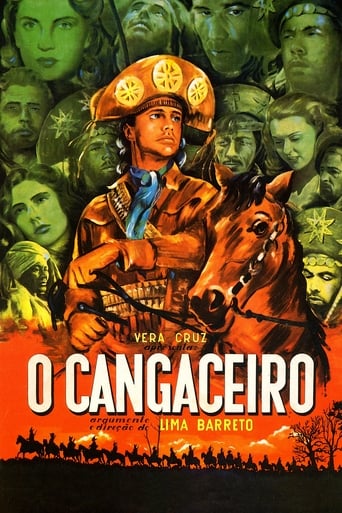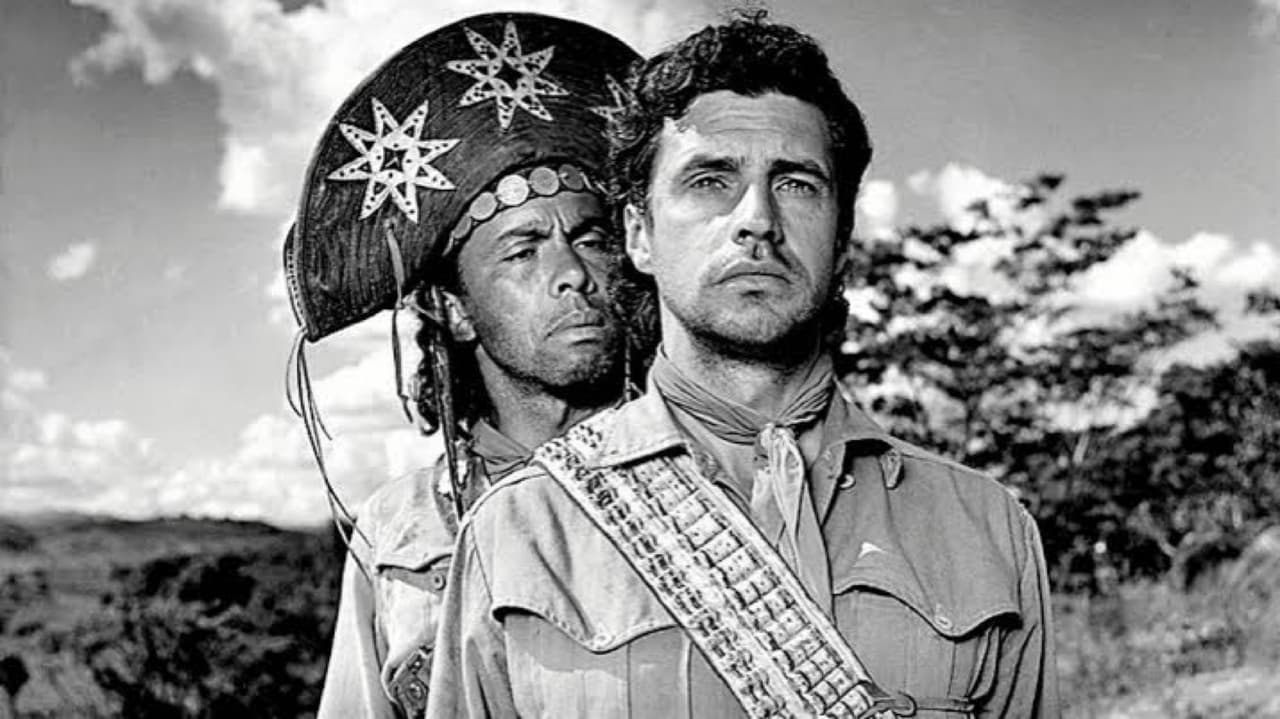runamokprods
Beautifully photographed, this Brazilian variation on the western is a strange mix. On the positive sides the images are very striking, and there are scenes of emotional intensity and violence, especially around the film's climax that are amazingly well staged and acted. On the other hand, there's not a lot of depth to any of the characters or their motivations. They're more archetypes than full people. (It also falls into that cliché of the better looking an actor is, the better human being his character is.) Certainly that's common in this genre, but it doesn't mean I have to like it. The story is nothing that new. Yet it's presented with a fierceness and focus that makes it very watchable. These bandit anti-heroes are hard men with hard hearts. Their violence is still disturbing, even by modern standards.The much discussed music fell on both sides of the fence to me. The score, which includes a lot of songs, is sometimes quite a haunting partner to the striking images. But at other times, when the group of bandits whose story this is fall into singing and dancing in ways that feel more akin to a musical than a gritty, violent western, the effect was odd and disconcerting, almost unintentionally comic. But that might just be a cultural bias - it took me a while to get used to the musical numbers in Bollywood films, for example.Overall, this was a film I was glad I got to see, and would like to see again for its imagery. Also, now that I understand its style, some of the cultural quirks would be less likely to throw me off balance.
Claudio Carvalho
In the times of the "cangaceiros" in the "sertão" (backcountry) in the North and Northeastern of Brazil, the cruel Capitão Galdino Ferreira (Milton Ribeiro) and his band abduct the school teacher Olívia (Marisa Prado), expecting to receive a ransom for her. However, one of his men, Teodoro (Alberto Ruschel) falls in love and flees with her through the arid backcountry chased by the brigands. Along their journey, Olívia also falls in love with Teodoro and proposes him to leave the countryside and move to the city. But Teodoro loves also his land and tells that he would like to die in the backcountry where he was born."O Cangaceiro" is one of the best films of the Brazilian Cinema and the best produced by the Companhia Cinematográfica Vera Cruz. This film was written and directed by Lima Barreto, with dialogs of Rachel de Queiroz and is inspired in the story of the brigand Lampião and his band (http://en.wikipedia.org/wiki/Lampi%C3%A3o). The awesome cinematography in black and white discloses a magnificent introduction with backlight in the marauders. On 12 May 1953, "O Cangaceiro" won the Cannes Film Festival in the category Best Adventure. In the wonderful soundtrack, highlights "Olê Muié Rendeira", sung by Vanja Orico. In accordance with the Wikipedia, this film was distributed by Columbia Pictures and sold to eighty (80) countries. It was exhibited in France for five consecutive years in the movie theaters. My vote is ten.Title (Brazil): "O Cangaceiro" ("The Brigand")
joel-280
Like the few great sci-fi, western, and other genre films, O Cangaceiro transcends its genre to speak of integrity and how people deal with awful contradictions and dilemmas that develop in their lives. Sometimes unsuccessfully. But don't let my fancy talk deter you; it's a great movie and if somehow you have a chance to see it, don't miss it. It is a three-star attraction (meaning, "worth a trip.")To meet the IMDb's length requirement, I'll also note its poetic photography, deservedly famous background music, and the cool, restrained treatment (aided by the b&w photography) of deep emotions and tragic events.
alexandre michel liberman (tmwest)
This brazilian film made in 1953 was clearly inspired by the american westerns. As a matter of fact you could call it a western, but it has a great difference, which are that the characters, folklore and the history of that area on the northeast of Brazil, so rich and interesting, that it makes this film transcend the structure of a typical western and became a great film in itself. The scenes where the band of outlaws is riding, with the song `Mulher Rendeira', being played on the background, is one of the greatest moments I have ever seen on film. Even though this film was a big hit when it came out, it even got an award at the Cannes Festival, it should be more appreciated nowadays.


 AD
AD
